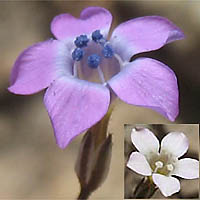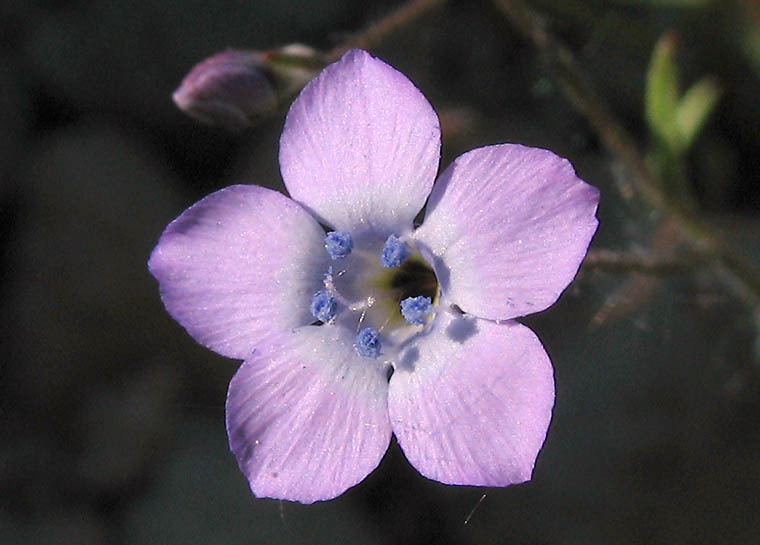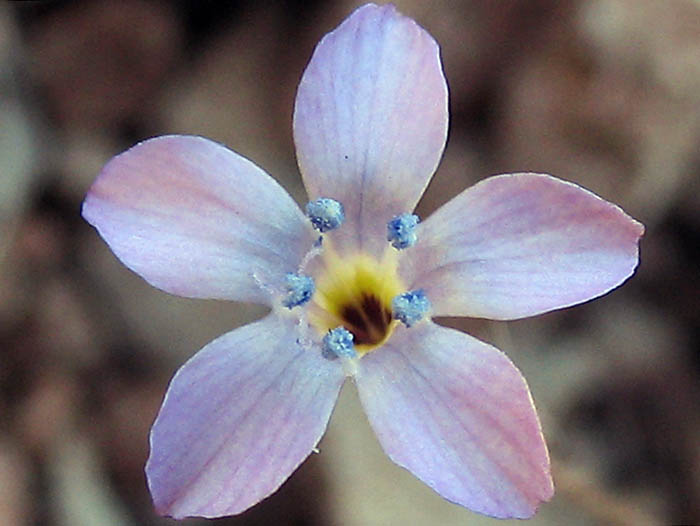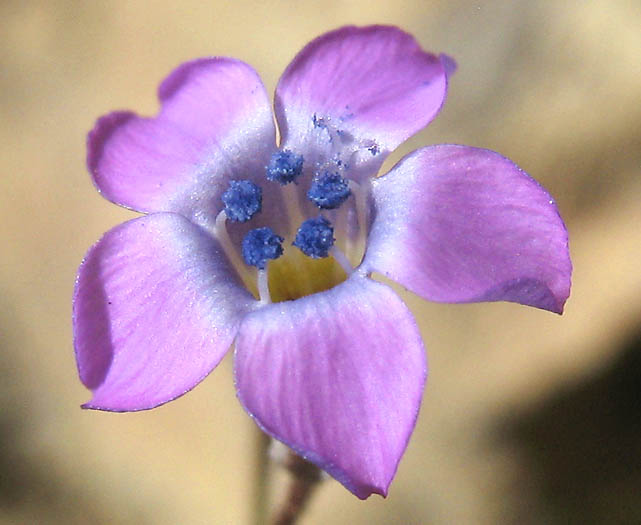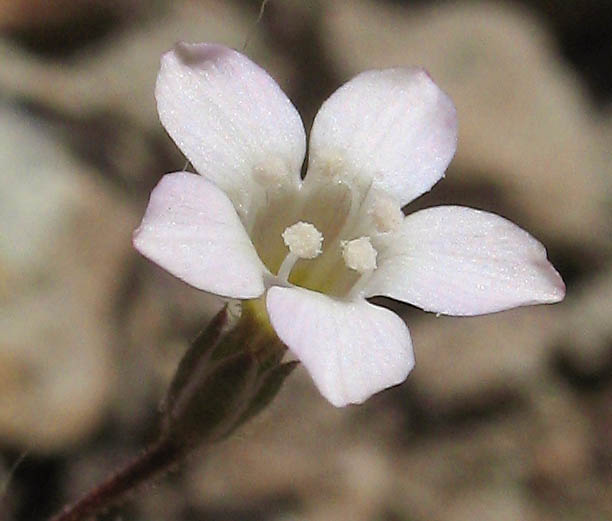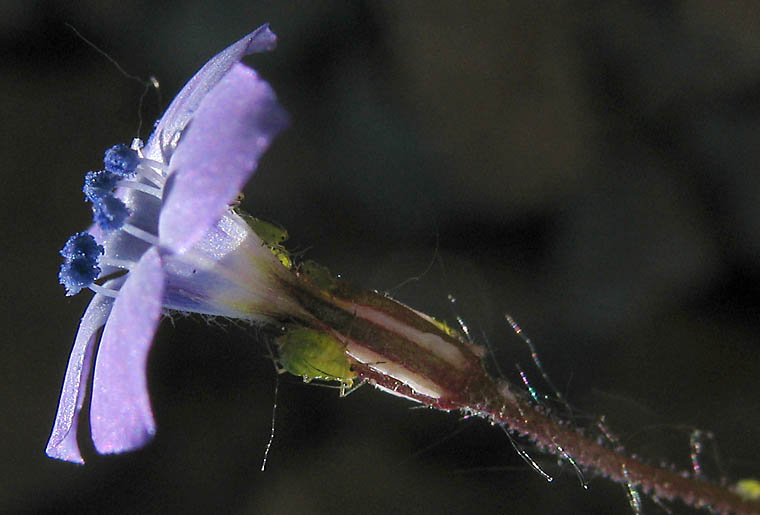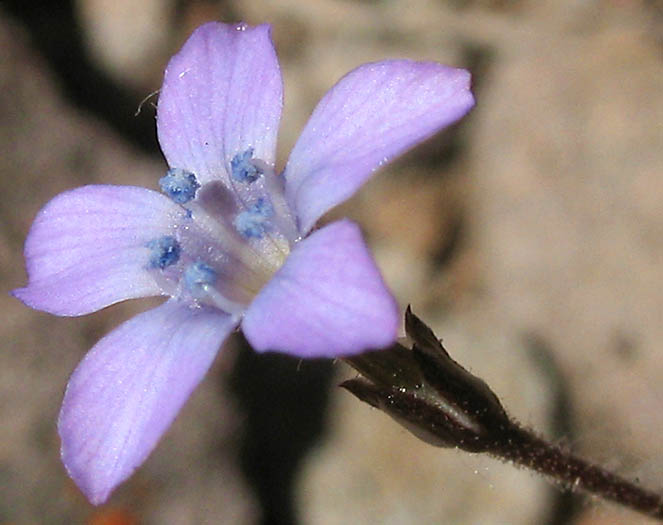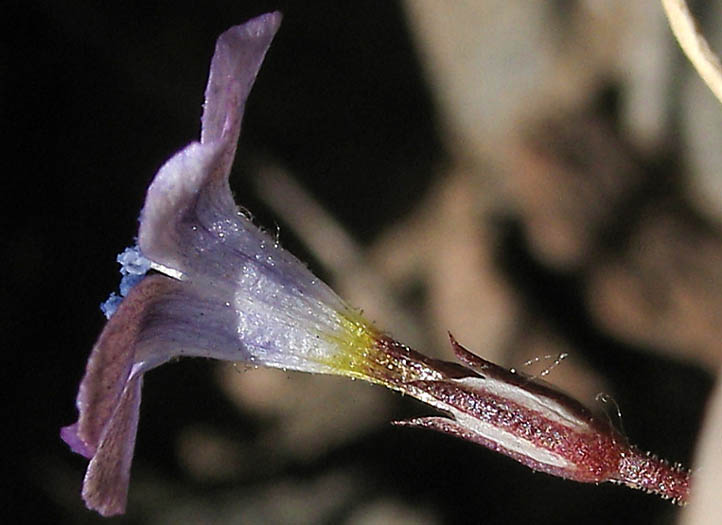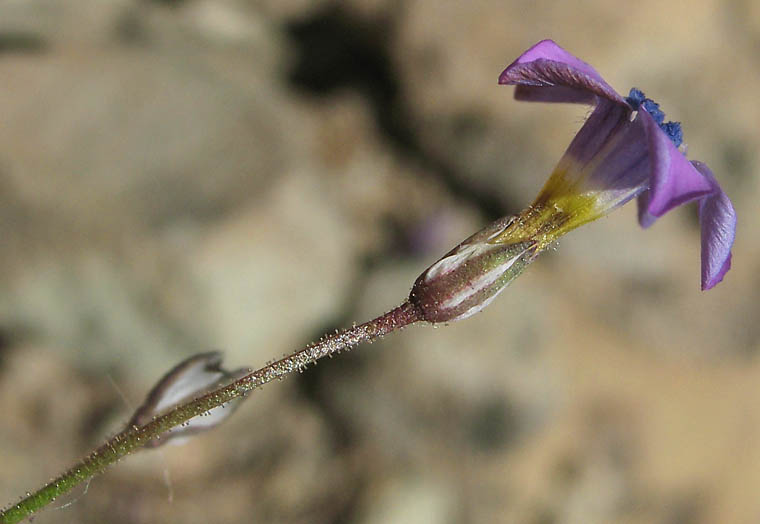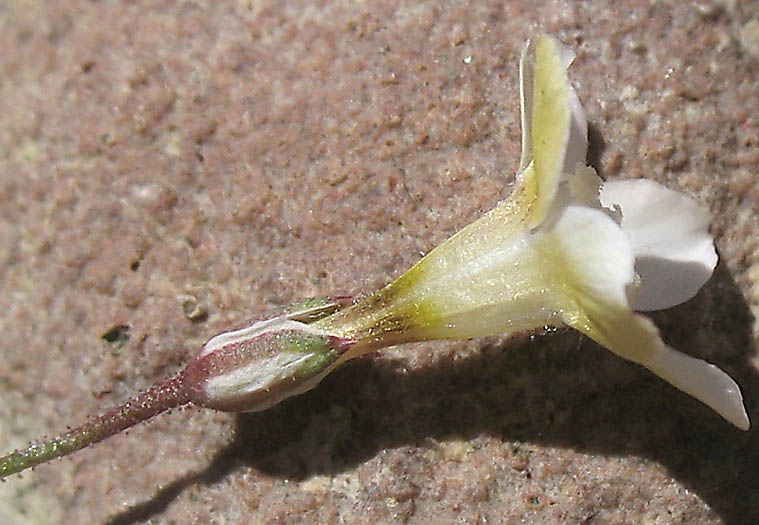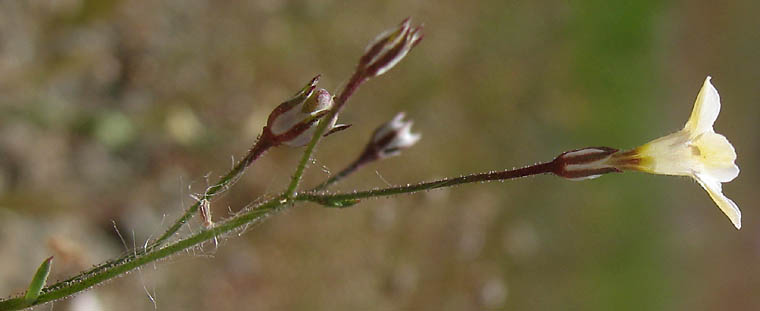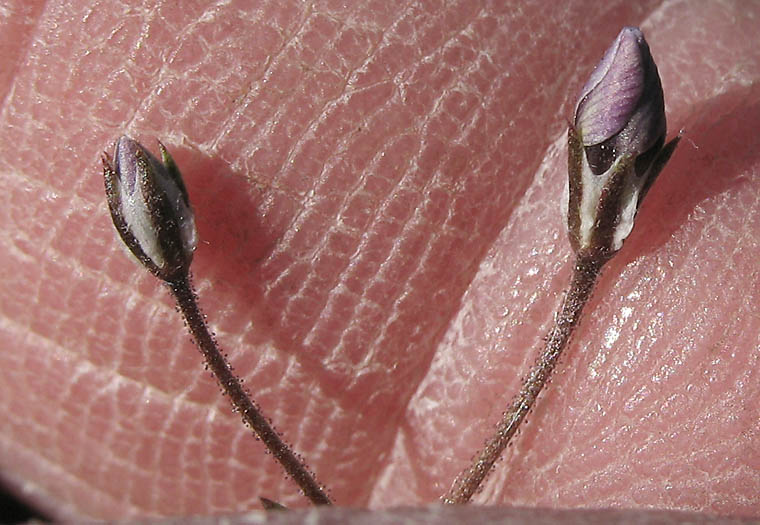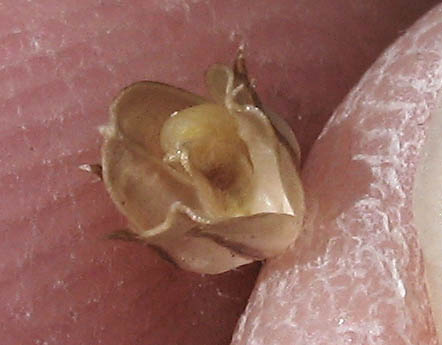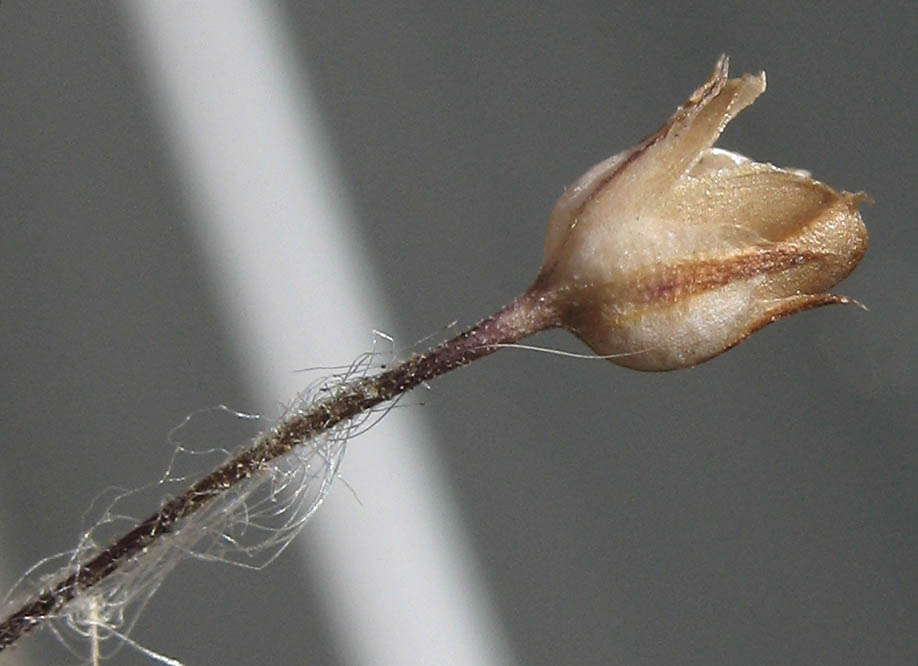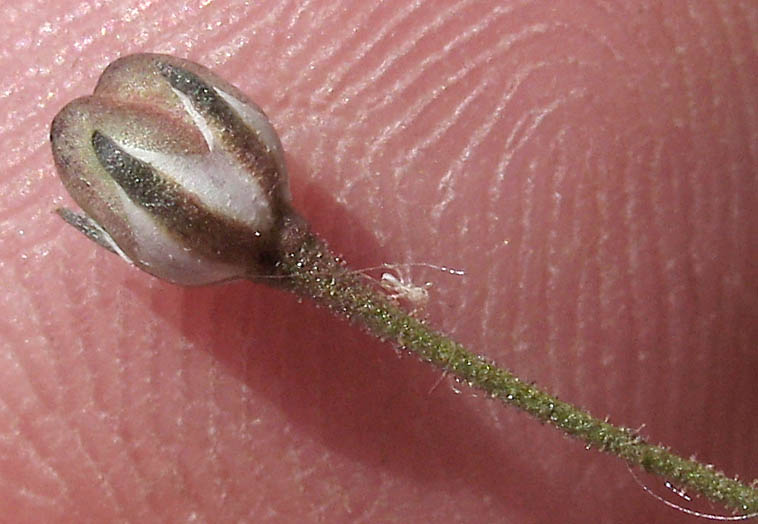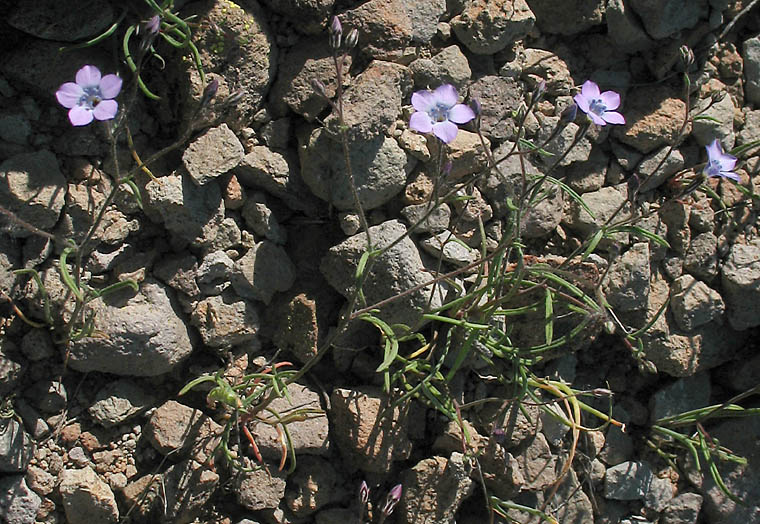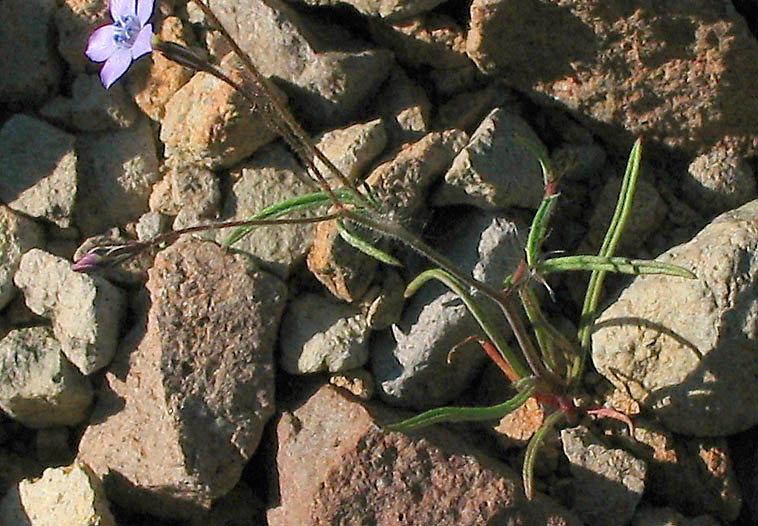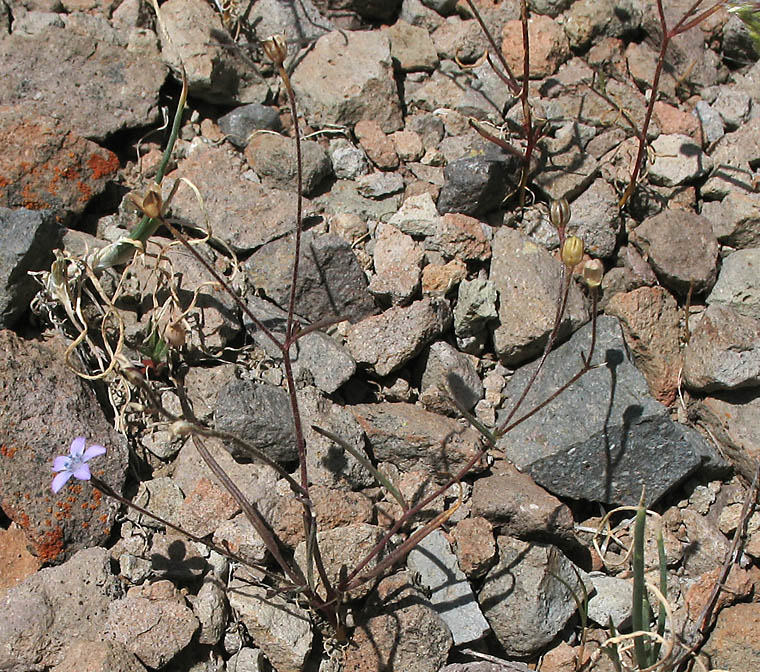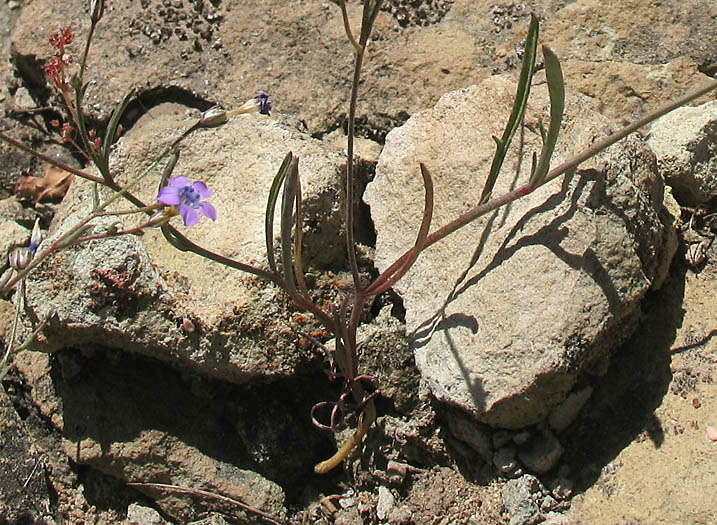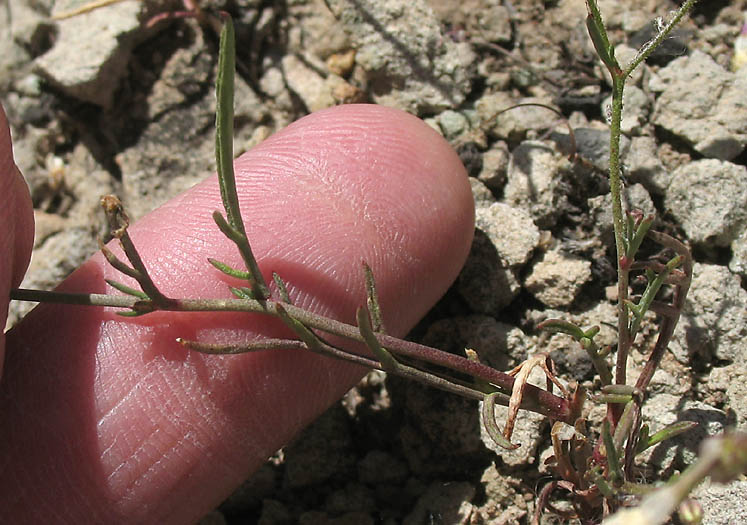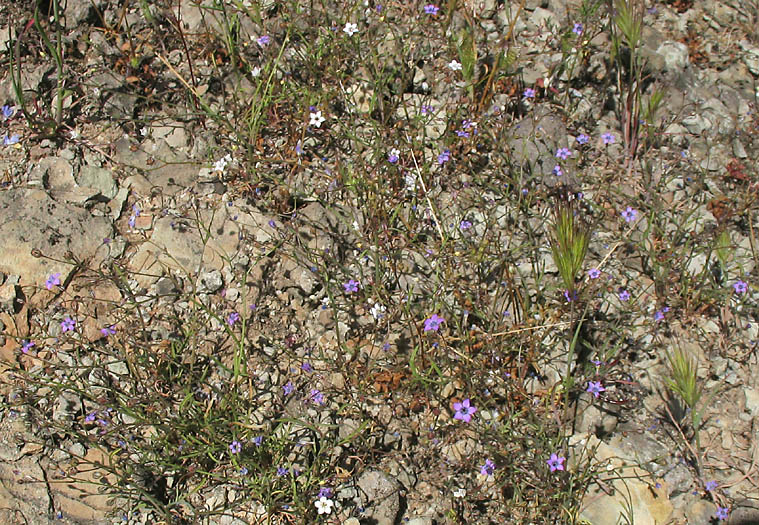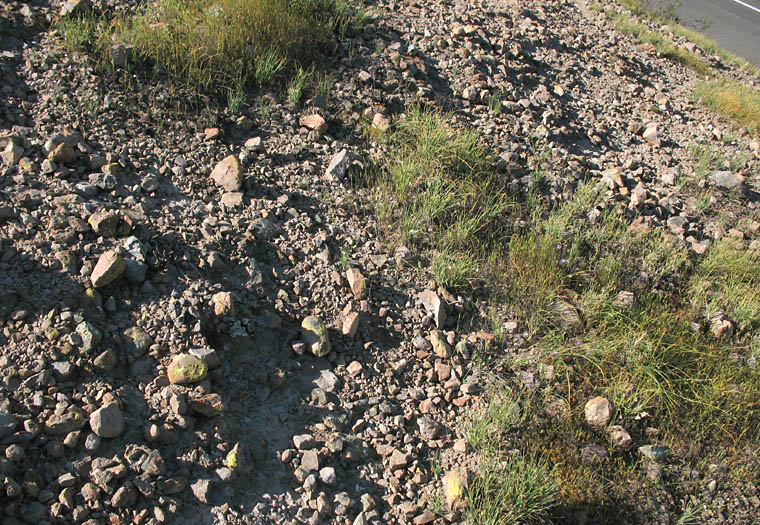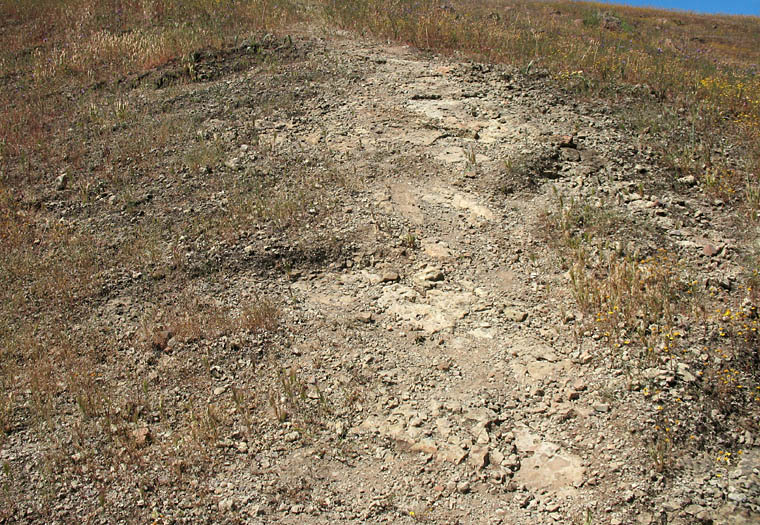Bridges' Pincushionplant
Navarretia leptalea
TJM1: Gilia leptalea.
Family: Polemoniaceae (PHLOX).
Other common names: Bridges' gilia.
Generic common name: PINCUSHIONPLANT.
Location: Triunfo Creek Park: Amid scree of north-facing rocky slope above Triunfo Cyn Rd, March 2010.
Characteristics: Native, White, Red, Medium, Solitary, Simple, Herbaceous, Annual, Early Spring.
Tentative ID
The use of the Jepson identification keys on this plant is not straight-forward and consequently there are a number of issues with this ID, even at the level of Genus. Making matters more difficult this plant cannot be found every year and therefore has not been seen frequently. The pictures shown here are from two small populations located about 700 yards apart in Triunfo Creek Park, both in full sun on thin rocky soils of north-facing slopes. The pictures from population 1, located near Triunfo Canyon Road, were photographed between mid-March and mid-April of 2010. Population 2, located below the east security fence of the Las Virgenes Reservoir, were photographed in early April of 2019. It is worth noting that the 2019 plants would have been influenced by nutrients released by the November 2018 Woolsey fire, and indeed, we saw other species in the vicinity that were quite large and robust compared to more typical years.
From the note in A N F under the genus Gilia regarding population 1:
And in A N F under Navarretia:
